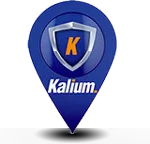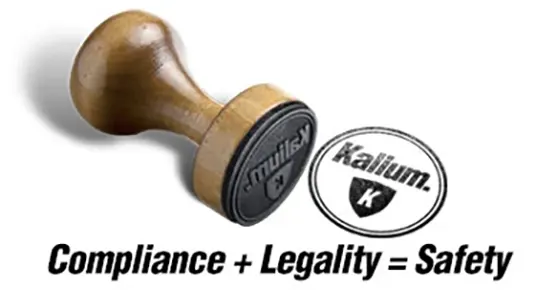WHMIS 2015 Classification Training Aligned with GHS 7th Edition
This WHMIS classification training is given by experienced chemists
Who is this specialized training for?
This WHMIS classification training is intended for all chemists, biochemists, toxicologists and chemical technicians who wish to be able to adequately evaluate a safety data sheet (SDS or formerly called Material Safety Data Sheets, MSDS) and for those who have to produce SDSs and labels as part of their work.
Why take this training?
Just in Quebec, approximately 20,000 reported accidents per year are related to the misuse of chemical materials. Several government measures and regulations have been developed to reduce this number. The development of SDSs for hazardous materials is one of the main measures developed by governments to ensure the safe use of hazardous products and reduce the associated hazards. In addition, governments oblige companies that develop chemical mixtures to produce an SDS that complies with the standards in force. The information found on these sheets becomes a reference for the safe use of the product. An erroneous SDS represents a risk of danger for all users. Inaccurate information regarding spills or disposal of the product (chemical residue management) also represents a risk for the environment.
Improving on WHMIS classification is a way to prevent chemical accidents and, as chemical professionals, it is our duty to contribute to making our workplaces safer at this level.
- Are you able to identify hazardous compounds in a chemical mixture or formulation?
- Did you know that a large proportion of SDSs are incorrect?
- Would you be able to recognize them?
- Do you know where to find the missing information on an SDS to intervene more effectively in your workplaces?
Hazard assessment begins with knowing the risks associated with a hazardous product.
- Do you know the tests to assess the physical hazards of a chemical compound?
- Do you know the databases used to collect information on the health hazards of a chemical mixture?
- Do you know the legal repercussions of an incorrect SDS?
- Would you be able to produce a complete SDS that complies with current standards?
To deepen your knowledge of WHMIS classification, our training is exactly what you need!
We privilege enjoyable learning with the help of games and didactic material.
Each participant will receive a training booklet for future reference and a training certificate.


Training outline
Module 1: Introduction
Module objectives: be able to
- Linking the path of UN recommendations to WHMIS 2015
- Understand how CBI requests work
1.1 History
1.1.1 Globally Harmonized System
1.1.2 WHMIS 2015
1.2 Confidential Business Information (CBI)
1.2.1 History
1.2.2 Inside WHMIS
1.2.3 Application Requirements
1.2.4 Associated costs
1.3 WHMIS Application
1.3.1 WHMIS-exempt products
1.3.2 Hierarchy of Hazards
1.3.3 Change in classification methodology
Module 2: WHMIS Classification of Physical Hazards
Module objectives: be able to
- Know the tests and criteria for the classification of physical hazards
- Understanding the Complexity of Categorizing Physical Hazards
2.1 Explosives
2.2 Flammable gases
2.2.1 Flammable gases
2.2.2 Chemically unstable gases
2.2.3 Pyrophoric gases
2.2.4 Classification of a mixture
2.3 Aerosols
2.3.1 Flammable vs. nonflammable
2.3.2 Classification
2.4 Oxidizing gases
2.5 Gases under pressure
2.5.1 Types of gases
2.6 Flammable liquids
2.6.1 Test: Flash Point
2.6.2 Classification of mixtures
2.7 Flammable solids
2.8 Self-reactive materials
2.9 Pyrophoric liquids
2.10 Pyrophoric solids
2.11 Self-heating substances
2.12 Substances which, in contact with water, emit flammable gases.
2.13 Oxidizing liquids
2.14 Oxidizing solids
2.15 Organic peroxides
2.16 Corrosive to metals
2.17 Combustible dusts
2.18 Simple asphyxiants
2.19 Physical hazards not otherwise classified
2.20 Chemicals under pressure
Module 3: WHMIS Classification of Health Hazard
Objective of the module: to be able to
- Know the tests and criteria for classifying health hazards
- Understanding the Calculation for Acute Toxicity
- Choosing the Right Classification Criteria for Corrosion Based on the Nature of the Product
3.1 Health Hazard Categories
3.2 Classification Steps
3.2.1 Extrapolation
3.3 Acute toxicity
3.3.1 Particularity of acute toxicity - inhalation
3.3.2 Toxicity calculation for a mixture
3.4 Corrosive
3.4.1 Skin corrosion / irritation
3.4.2 Severe eye damage / eye irritation
3.4.3 Classification for aqueous solutions
3.4.4 Classification for organic solutions
3.5 Respiratory or skin sensitization
3.6 Germ cells Mutagenicity
3.7 Carcinogenicity
3.7.1 Classification of a mixture
3.7.2 Variances between Canada and the U.S.
3.8 Reproductive toxicity
3.9 Specific target organ toxicity - single exposure
3.9.1 Classification of a mixture
3.9.2 Particularity of Category 3
3.10 Specific Target Organ Toxicity - Repeated Exposures
3.10.1 Classification of a mixture
3.11 Aspiration Hazard
3.12 Biohazardous Infectious Materials
3.13 Health Hazards Not Otherwise Classified
Module 4: Safety Data Sheets (SDS), Label
Objective of the module: to be able to
- Know SDS and labelling requirements
- Differentiating between supplier label and workplace label
4.1 Safety Data Sheet
4.1.1 16-part structure of the SDS
4.1.2 Requirements
4.2 Labelling
4.2.1 Supplier Label
4.2.2 Workplace Label
4.3 Conservation of documents
Module 5: Conclusion
5.1 Europe - CLP
5.1.1. Variances with WHMIS classification
5.2 Training
5.3 Fines and penalties

Design, programming and hosting by VisionW3.com


